Inside The New York Botanical Garden
Posted in Around the Garden, Science on January 17 2013, by Matt Newman
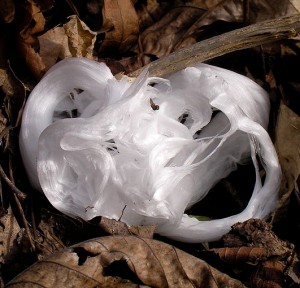 Winter is … well, a weird time of year. We tromp around in oversized boots, brandishing umbrellas that hardly seem useful. The trees all stand–if a touch awkwardly–in stark and naked relief, while phases of matter bounce at whim between liquid and solid. As a gardener, it’s hard to be optimistic. Sure, there’s the arrival of seed catalogs to look forward to, and bulbs to be forced indoors, but repeated trips to the backyard to peek at the soil rarely prove fruitful … most of the time.
Winter is … well, a weird time of year. We tromp around in oversized boots, brandishing umbrellas that hardly seem useful. The trees all stand–if a touch awkwardly–in stark and naked relief, while phases of matter bounce at whim between liquid and solid. As a gardener, it’s hard to be optimistic. Sure, there’s the arrival of seed catalogs to look forward to, and bulbs to be forced indoors, but repeated trips to the backyard to peek at the soil rarely prove fruitful … most of the time.
Patience, an early rising, and a northerly location can prove that there’s beauty to be found in nature’s colder months, assuming you know where to look, because when the conditions are just right, at the edge of sunrise, frost flowers glitter.
I’m not referring to snowdrops, elegant as they are in late winter and early spring. “Frost flower” is more of a literal term. And when you see the leaves, vines, and gossamer threads formed through this unique interaction between plant and atmosphere, you’ll rightly understand how they came to earn this nickname.
Read More
Posted in Gardening Tips on April 27 2011, by Sonia Uyterhoeven
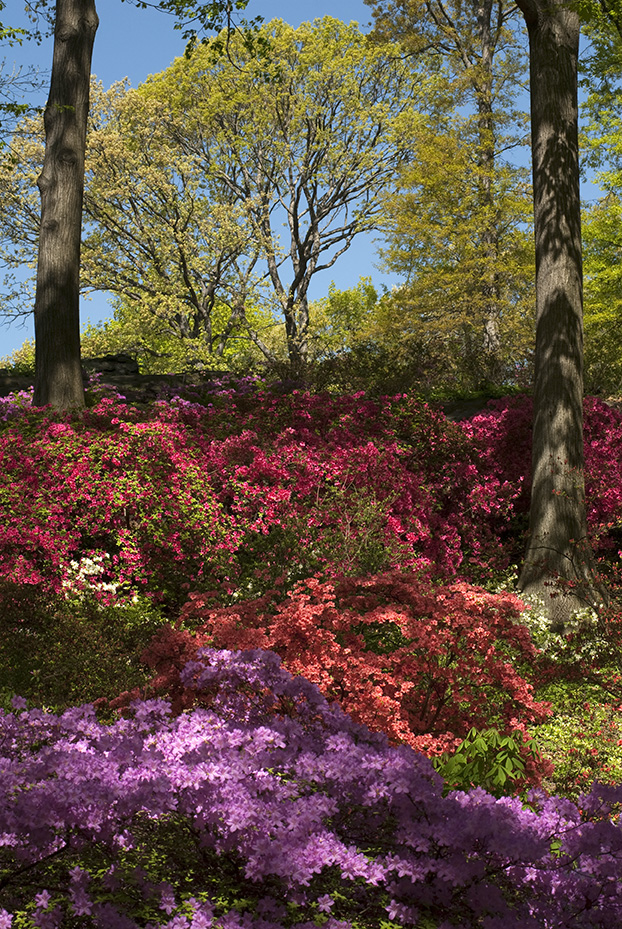 Azaleas, as seen in the Garden‘s spectacular new Azalea Garden, provide home gardeners with wonderful spring color that extends from April into July (depending on the species). Evergreen azaleas provide year-round interest while deciduous azaleas often offer multi-seasonal appeal and lovely fall foliage. Azaleas are slow growing; many of them, save some of the larger deciduous natives, make good candidates for foundation plantings. By following a few simple rules, it is easy to design effectively with azaleas.
Azaleas, as seen in the Garden‘s spectacular new Azalea Garden, provide home gardeners with wonderful spring color that extends from April into July (depending on the species). Evergreen azaleas provide year-round interest while deciduous azaleas often offer multi-seasonal appeal and lovely fall foliage. Azaleas are slow growing; many of them, save some of the larger deciduous natives, make good candidates for foundation plantings. By following a few simple rules, it is easy to design effectively with azaleas.
Azaleas can be planted as specimens or in groups. The royal azalea (Rhododendron schlippenbachii) not only has luminescent pinkish-white flowers in late April/early May but also exquisite rounded foliage that is arranged like pinwheels on the stems, making it an ideal specimen plant.
The native flame azalea (Rhododendron calendulaceum) flowers in late May to early June in a variety of shades from fiery red-orange to yellow-orange (as the name would suggest). Specimens can reach up to 12 feet tall and 5 feet wide and rival any large Viburnum in the garden. When planted en masse, flame azaleas create a nuanced color harmony that will brighten any landscape; they do not look congested or dense due to their graceful structure. Though deciduous, they can provide seasonal screening in your yard.
Pay attention to bloom time when planting azaleas in groups. Azaleas can generally be categorized by three bloom times: early, mid, or late season. I have visited gardens where azaleas are effectively planted so that they flower sequentially; as one azalea fades its neighbor opens, providing color for extended periods. Or, weave a tapestry by planting groups of azaleas that flower at the same time.
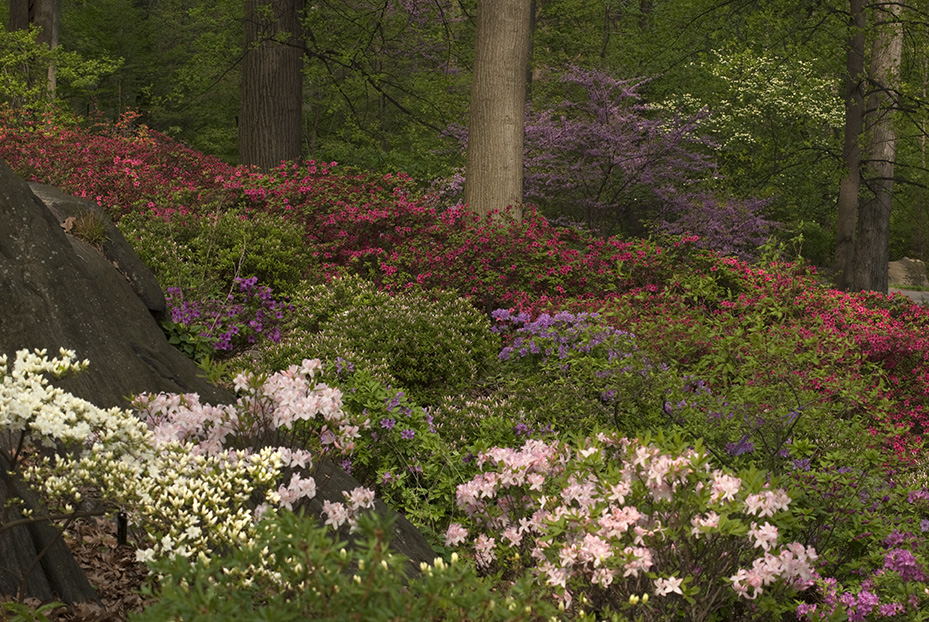
See more of Sonia's great tips below the jump.
Posted in Gardening Tips on September 21 2009, by Sonia Uyterhoeven
 |
Sonia Uyterhoeven is Gardener for Public Education. Join her each weekend for home gardening demonstrations on a variety of topics in the Home Gardening Center. |
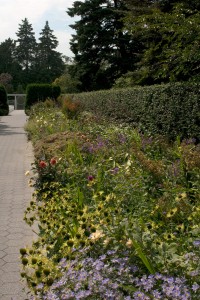 Traditionally, Seasonal Walk at The New York Botanical Garden has been a display of annuals, which kicked off with a massive colorful showing of tulips in spring and reached a crescendo in the summer with an imaginative arrangement of summer tropicals. The season closed with an autumnal mix of mums (Chrysanthemum) and ornamental cabbages (Brassica spp.).
Traditionally, Seasonal Walk at The New York Botanical Garden has been a display of annuals, which kicked off with a massive colorful showing of tulips in spring and reached a crescendo in the summer with an imaginative arrangement of summer tropicals. The season closed with an autumnal mix of mums (Chrysanthemum) and ornamental cabbages (Brassica spp.).
For this year’s Seasonal Walk, the renowned Dutch designers Piet Oudolf and Jacqueline van der Kloet were invited to create a display that drew upon their areas of expertise: perennials, ornamental grasses, and bulbs. The result has been a transformation of the annual border into a multi-seasonal herbaceous paradise. Following, we explore some of the lessons that a design project of this scope has to offer the home gardener.
One feature that is immediately recognizable in the border is the intermingling of permanent and ephemeral plant masses. Perennials are skillfully placed in drifts that flow through the border. They hold the space in the spring as they slowly emerge and fill out until they are cut back as late as possible at the end of the season. They form the structural component in the border.
Tucked in the perennial drifts are irregular shapes that have been left open for the more ephemeral displays—tulips in the spring and annuals and tender bulbs in the summer. While these areas have irregular shapes—they are referred to as batwings and peanuts based on their form— the same shapes are repeated throughout the border, giving a sense of continuity that is important in any good design.
Read More
Posted in Gardens and Collections on April 16 2009, by Plant Talk
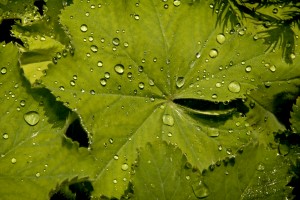 It’s a sunny spring morning; the air is crisp and the sky is blue. I am on my way to teach a class at The New York Botanical Garden and, as always, am reveling in the lovely green setting that surrounds me. This particular morning I notice the water drops glistening atop the blades of grass and remember that the season of dew watching is upon us.
It’s a sunny spring morning; the air is crisp and the sky is blue. I am on my way to teach a class at The New York Botanical Garden and, as always, am reveling in the lovely green setting that surrounds me. This particular morning I notice the water drops glistening atop the blades of grass and remember that the season of dew watching is upon us.
Dew appears when the days are warm, the nights cool, and the air is moist. The earth cools overnight, chilling the air, and like magic, drops of water appear out of nowhere and settle on whatever is near the ground. But it does not last long. By late morning the dew evaporates and our momentary watery celebration of spring is over.
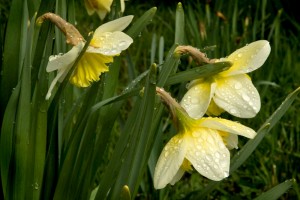 Spring flowers are lovely when covered in dew. The blossoms of daffodils, pansies, clover, dianthus, phlox, and euphorbia sparkle in the morning sun with the jeweled globes of water perched lightly upon their petals. One of the best dew catchers is lady’s mantle (Alchemilla mollis). Alchemilla is Arabic for “little magical one” and refers to the healing properties of the water that collects on its wide, crinkled leaves.
Spring flowers are lovely when covered in dew. The blossoms of daffodils, pansies, clover, dianthus, phlox, and euphorbia sparkle in the morning sun with the jeweled globes of water perched lightly upon their petals. One of the best dew catchers is lady’s mantle (Alchemilla mollis). Alchemilla is Arabic for “little magical one” and refers to the healing properties of the water that collects on its wide, crinkled leaves.
The idea that dew contains healing powers was echoed in the 1930s by Dr. Edward Bach, an English physician who developed the famed Bach flower remedies. He surmised that the dew sitting upon a blossom absorbed the healing energies of that flower. He reasoned that ingesting a small amount of a flower’s sun-drenched dewdrops could rebalance key emotional energy patterns that were behind many people’s illnesses.
So, when you walk out among the Garden’s tranquil spring flower borders, look closely and see how the dewdrops, nature’s ephemeral wonder, act like little crystal balls, magnifying the early morning sunlight. Herein lies the magic of dew.
 Winter is … well, a weird time of year. We tromp around in oversized boots, brandishing umbrellas that hardly seem useful. The trees all stand–if a touch awkwardly–in stark and naked relief, while phases of matter bounce at whim between liquid and solid. As a gardener, it’s hard to be optimistic. Sure, there’s the arrival of seed catalogs to look forward to, and bulbs to be forced indoors, but repeated trips to the backyard to peek at the soil rarely prove fruitful … most of the time.
Winter is … well, a weird time of year. We tromp around in oversized boots, brandishing umbrellas that hardly seem useful. The trees all stand–if a touch awkwardly–in stark and naked relief, while phases of matter bounce at whim between liquid and solid. As a gardener, it’s hard to be optimistic. Sure, there’s the arrival of seed catalogs to look forward to, and bulbs to be forced indoors, but repeated trips to the backyard to peek at the soil rarely prove fruitful … most of the time.






